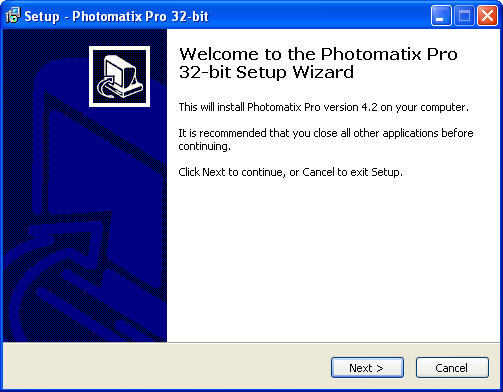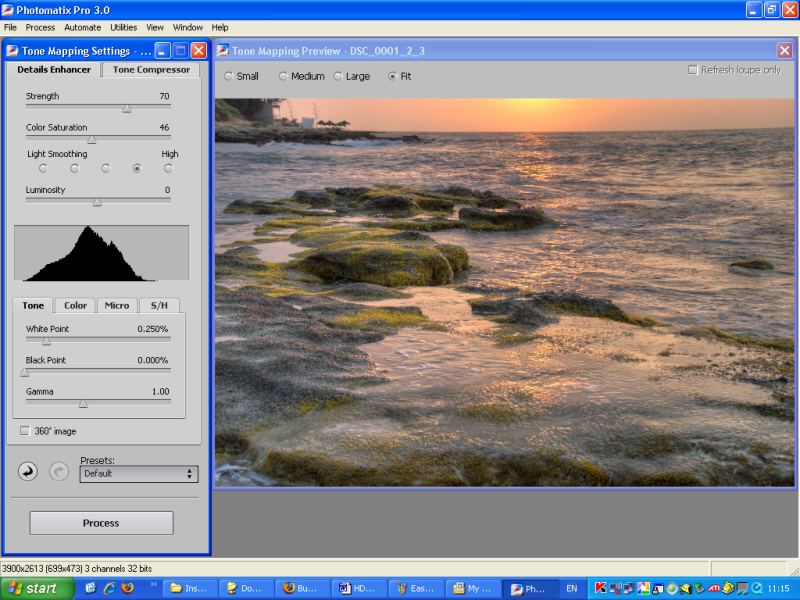

First, I bring all of the RAW images captured by the GigaPan into Lightroom, then select one image from the sequence that’s representative of the exposure range of the entire scene, typically a section at the edge of the horizon that includes both sky and foreground. You might think that managing these kinds of file sizes requires some serious computer power, but I processed the Mount Rushmore GigaPan on my MacBook Pro with 4 GB of RAM. I calculated a recent capture of Mount Rushmore at 473 megapixels.

What does that really mean? Divide your finished 8-bit file size by three to determine the megapixel count of the equivalent camera. RAW files captured with longer telephotos can easily reach two gigabytes in size at 8-bits. A typical “gigarama,” for me, using a Canon EOS 5D Mark II and a 200mm lens, might cover six rows and 24 columns, resulting in an approximate finished file of about one gigabyte at 8-bits.

The composited file is very, very detailed, with the kind of optimum resolution and color fidelity large-format film photographers sought with their 4×5 and 8×10 view cameras. The robot then moves and fires the camera precisely through a grid of columns and rows (the photographer can choose the order), overlapping the images as necessary to facilitate reassembly in the GigaPan software. The photographer sets the exposure time and angle of view of the camera/lens combination, and follows the EPIC Pro’s prompts to set the parameters of the total image to be captured, from upper left to lower right, within a maximum vertical range of 155º and a horizontal range of 360º. The computer is connected to the DSLR’s cable release input via a supplied cable. The GigaPan EPIC Pro is a computerized camera mount that holds a DSLR and lens combination up to 10 pounds.

The system works by stitching together multiple precisely aligned digital captures into a composite that looks as if it was taken with a single large-format camera. The GigaPan EPIC Pro works with most DSLRs and runs $895 from GigaPan ( As you can see here, the GigaPan EPIC Pro can produce incredibly large panoramas with highly detailed resolution. It’s as if I were using a digital 8×10 view camera, which, if it existed, would cost more than $50,000. But now a new automated system, the GigaPan EPIC Pro, helps me to achieve ultra-high-resolution composites on pixel-packed sensors coupled with sensitive lenses, from macro to long telephoto. Results (like my math grades in school) were mixed.
#Photomatix pro 2.5 full
Naturally, I wanted the same capability with my digital SLRs and full range of lenses, so using parts from Really Right Stuff (I rigged up a complicated system of sliding rails and meticulous degree calculations while I manually applied the GigaPan concept to my landscape and macro photography.
#Photomatix pro 2.5 series
The GigaPan system uses gigapixel-imaging technology employed by NASA’s Mars Rover to capture a precise series of images which, when composited in GigaPan’s Stitch software, yields a high-resolution image that can be uploaded and shared at GigaPan’s website ( or printed to very large sizes. It was made possible by a robot called the GigaPan EPIC. In the November 2009 issue of Outdoor Photographer Magazine, we wrote about a way to achieve highly detailed landscapes, the “gigascape,” with your compact digital camera.


 0 kommentar(er)
0 kommentar(er)
